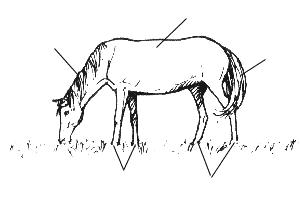Wooden mosaic - unique decoration interior that has been used for a very long time. In past centuries, the palaces of royal families and wealthy nobility were decorated with it. It looked respectable and gave special status to the owner of the home. And today mosaics can decorate any interior, the main thing is to approach it wisely.
What is mosaic and where is it used?
Wooden mosaic tiles are a luxurious decoration for walls or floors. It consists of plates of any size, cut from quality wood(most often valuable varieties are used).
The plates are attached to a durable mesh base, which is made of plastic. Most often, mosaic elements are square in shape, but rectangular and curved parts are also found. This material is used for finishing residential premises, as well as in offices, restaurants, saunas and others. in public places. Decorating a room with mosaics will give it visual warmth, sophisticated appearance. With its help, you can highlight any object in the interior or a separate zone.
The benefits of fine finishing

Wooden material for interior decoration has a number of undeniable advantages. Which ones?
- Wood is an environmentally friendly and harmless material.
- Ease of use in rooms with uneven walls.
- Service life at correct use the material is very large. It resists changes in humidity and mechanical stress well.
- The versatility of the material - it can be combined with many interior styles and modern materials. Mosaics look great with glass, ceramics, and metal.
- Uniqueness - since high-quality mosaics are made by hand, its design will be unique.
- Excellent sound and heat insulation qualities.
- Possibility of repair - if cracks or scratches appear on the floor or walls during use, they can be easily hidden.
Types of wooden mosaics
There are two main styles of wood mosaics: marquetry and intarsia. Their difference lies in production technology.
Intarsia is the most labor-intensive and difficult to manufacture. finishing material. Wooden plates different shades crash into wooden surface. This creates a unique figure image. Researchers believe that intarsia began to be used back in Ancient Egypt, however, it reached its peak in Italy. The Renaissance is famous for its utensils and church accessories decorated using the intarsia technique.
Marquetry is considered a simplified version of intarsia. In this case, the mosaic composition is made from pieces of veneer. The pieces are assembled along the edges like a puzzle and glued to the base.
What types of wood are most often used to make wooden mosaics? Pine and linden, beloved by many people, are not applicable to manufacturing techniques of this material. Here, harder types of wood are required, namely oak, ash, cedar. Sometimes alder is used, but much less frequently.

There is also a more affordable option - a finishing material made from shavings. It is mixed with cement, then the mass is given the desired thickness and density.
Technology for the production of unique material
Products using the complex intarsia technique are created with more labor and time than marquetry. To begin, select the desired pattern and create a sketch. The sketch is divided into separate parts. Afterwards, these elements are cut from various types of wood, differing in texture and shade. The base is solid wood, in which recesses are cut out for the details of the design. Reverse side These parts are left rough for better adhesion to the base, but the front part is polished for a long time and thoroughly, giving an aristocratic shine. If pieces of the design protrude above the base, then you have relief intarsia. When the edges of the design and the base coincide, we are talking about pictorial intarsia.
The technology for making marquetry is much simpler.

On thick paper the desired pattern is drawn, then parts are cut out of the veneer and treated with a special solution. Afterwards, a veneer design is pasted onto the paper, turned over and pasted onto the item to be decorated (or onto the base mesh).
Laying wooden mosaics
Most often, the material in the store can be found in the form of sections of 30 x 30 cm. This type of mosaic greatly simplifies its installation.
The means used when installing the material are very important. Do not use ordinary glue! Installation and finishing compounds are required. Before starting work, clean and degrease the work surface.
If you are gluing the material onto plywood, make sure that the seams are joined diagonally. In this case, even with thermal deformation, there will be no divergence of the seams.

Wooden mosaic tiles for walls also require special grouting. Do not use regular grout as they contain water and have low elasticity. Over time, such material will begin to crack. Buy special epoxy grout.
Wood mosaic floor tiles are most often made from teak and placed on a cork backing. The seams in such a floor should be filled with silicone glue and sanded several times.
Wood mosaic in 3D technology
A modern apartment often presents interesting design projects. How to create an emphasis on individual areas of the room? An expressive material can help - wooden mosaic for walls in 3D technology. A three-dimensional surface can be created using different techniques: processing parts with different coloring compounds, firing individual parts or painting them with dull paints. Inserts from other materials will also help.
Currently, artificially aged volumetric mosaics are gaining popularity. It may have traces of woodworms, nails, scratches, marks old paint and so on. These tiles are actively used to create atmospheric interiors that imitate old wooden walls.
Wooden mosaic in the interior is a harmonious combination of style and taste, history and modernity. Wood is one of the most popular materials in the decoration of houses and apartments to this day. Its only drawback is the high price, but it pays off for a long time mosaic services.
Wood is one of the first materials that man began to use for building and decorating a house. Thousands of years have passed since then, but the love for the warmth of the cut and natural shades of wood has not disappeared anywhere. Moreover, in last years designers are actively looking for new options for using their favorite material. And the design of wooden mosaic tiles is one of such bright and bold experiments.
3 reasons to buy wood mosaic
Wood-like mosaics have long since surprised anyone! But the point is to buy mosaic tiles for bathroom from natural wood, any sane person will doubt. And not in vain! Even when using the most modern water-repellent impregnation, wood will never be comparable in its ability to resist moisture and fungi with glass and ceramics.
This material has completely different advantages:
- environmental friendliness. While the safety of stone and ceramic raw materials depends directly on where they are mined, wood never carries a hidden threat;
- non-slip surface, which is especially important for floor slabs;
- original appearance. Thus, wooden mosaic, the price of which in our online store pleasantly surprises with its affordability, is almost irreplaceable in loft and country style interiors.
With the right approach, wooden mosaic tiles can even be used in the bathroom: this is the option that is often offered to buyers in photos in catalogues. It’s just better to install it in spacious bathrooms with a well-thought-out ventilation system, and on those walls where water hardly gets in. The wood holds temperature excellently, does not deform, and with minimal care lasts for many years.
Where to use wood mosaic
A practical option for using wooden mosaic tiles on the floor is zoning the space, for example, creating a relaxation area in the room: in front of the fireplace or simply in the center of the room. Warm wood will also appeal to those who like to walk barefoot - we recommend that they lay out natural material area in front of the sofa or under dining table in the living room.
Stylish wooden tiles for the bathroom, natural mosaic tiles for kitchens and living rooms can be selected from a photo from the catalog, focusing on the advice of designers and your own taste. The optimal price-quality ratio is offered by the Chinese factories Opera Decor and Natural. Well, for those who are ready to spare no expense when creating the design of a living room, kitchen or bathroom, we can recommend the luxurious mosaic tiles of the Spanish brand L "Antic Colonial.
From this article you will learn the pros and cons of mosaics, its main types and the materials from which it is made. And - useful recommendations and finishing guide.
Mosaic is an interesting and convenient way of finishing
Why is mosaic becoming more and more popular? Because it has a sufficient number of advantages and looks great in the interior, no matter what room it is used in.
Wooden mosaic for walls
This type of finishing consists of pieces of wood of various sizes and shapes. Advantages of mosaic:
- combines with other types of finishes;
- keeps warm;
- creates a feeling of comfort;
- will last a long time;
- environmentally friendly material;
- masks uneven walls;
- helps with zoning space;
- original drawing.
Flaws:
- some types of wood are not resistant to moisture;
- such finishing is not cheap;
- requires painstaking work.
Where is it used?
 It is used not only to decorate houses, but also cafes, restaurants and theaters, because this decoration creates a unique atmosphere in the room. It is suitable for rooms decorated in classic, modern or retro style. Suitable for country, Provence, Baroque. Looks great if the interior contains glass or metal parts. It is best to use it in large rooms. With the help of such decoration you can highlight any part of the room, for example, dining area, fireplace, relaxation area.
It is used not only to decorate houses, but also cafes, restaurants and theaters, because this decoration creates a unique atmosphere in the room. It is suitable for rooms decorated in classic, modern or retro style. Suitable for country, Provence, Baroque. Looks great if the interior contains glass or metal parts. It is best to use it in large rooms. With the help of such decoration you can highlight any part of the room, for example, dining area, fireplace, relaxation area.
What materials is it made from?
Different types of wood are used for manufacturing:
- pine and linden (the wood is quite soft, so these species are rarely used);
- walnut (features a wide variety of shades);
- alder;
- maple;
- ash;
- coconut;
- cedar;
- bamboo;
- aspen.
Sometimes wood shavings or less commonly used species such as Anatolian walnut or holly are used.
Kinds
 Depending on the installation technique, as well as the size of the planned installation, you can choose a separate mosaic option.
Depending on the installation technique, as well as the size of the planned installation, you can choose a separate mosaic option.
- Intarsia
It represents images and patterns created from wooden plates of various species and colors (mostly uses no more than 4 tones). The prepared and polished plates are glued together and then attached to the base with glue, where a recess has been made in advance. To change the color of wood, special oils or boiling are sometimes used.
- Inlay
With this method, plates of other materials, such as ivory, are cut into a wood base. Moreover, the plates must be at the same level as the base. Expensive materials are usually used as inserts, making the finished mosaic striking in its luxury.
- Marquetry
On the base, which can be made of wood, thin wooden plates– veneer – various colors and types. When creating paintings, the direction of the fibers is also taken into account.
- Block mosaic
This technique involves gluing bars of different colors or cross-sections, and then cutting them crosswise. Thus, bars with the same pattern are obtained, from which a mosaic is then created. They can be glued to the base or inserted into a prepared recess.
DIY wooden mosaic for walls: manufacturing process
 Work on finishing the surface of a room with wooden mosaic slabs or small cubes:
Work on finishing the surface of a room with wooden mosaic slabs or small cubes:
- The size of the area that will be decorated with mosaics is measured.
- Then it is divided into small parts, which need to be made.
- After this, the parts are drawn on the wood and cut with a saw.
- The edges of the cut parts are formed using a milling machine.
The finished parts are treated with an antiseptic, then dried and polished, using first larger and then finer abrasives.
Decorating walls with wooden mosaics: a guide
 First you need to clean and level the walls (for faster leveling it is recommended to use plywood or drywall). Then a primer is applied, which makes the walls absorbent.
First you need to clean and level the walls (for faster leveling it is recommended to use plywood or drywall). Then a primer is applied, which makes the walls absorbent.
Mosaics need to be glued with compounds that do not contain water. Therefore, you need to use parquet glue rather than tile adhesive.
When filling joints, do not use grout that is used for ceramic tiles. Due to changes in humidity and temperature, the wood can change size, as a result of which the grout may simply crack. Therefore, special epoxy grouts are used.
To increase the service life, the finished mosaic is coated with wax or special oils.
 Mosaic does not require special care. Simply wipe it with a damp cloth and then dry it.
Mosaic does not require special care. Simply wipe it with a damp cloth and then dry it.
Mosaic can also be used for decoration kitchen apron or walls in the bathroom, but only after treating it with varnish.
 To create a more interesting coating, use three-dimensional parts or combine parts of different shapes, for example, circles and rectangles. This design is suitable for spacious rooms, as it takes up a lot of space.
To create a more interesting coating, use three-dimensional parts or combine parts of different shapes, for example, circles and rectangles. This design is suitable for spacious rooms, as it takes up a lot of space.
Considering all the advantages of mosaic, ease self-installation and the way it transforms the interior, you can call it an excellent material. With it you can easily make the room unique and cozy.
Useful video
Mosaic like facing material is in great demand today. It can handle the most different surfaces. Moreover, it allows you to transfer various styles registration As for wooden mosaics, this is a real art.
This unique finishing material is used both for processing walls and for processing floors. For example, it can be used in arranging a kitchen, sauna, cafe, bathhouse, restaurant, bathroom and other premises.
Great demand and popularity is explained by a sufficient number of advantages. We invite you to learn more about what wooden mosaic tiles for walls are.
Wooden mosaic - what is it?
This type of decoration will definitely be interesting for you if you are no longer attracted to the usual wall decoration with wallpaper, painting, and the like. Making mosaics from wood with your own hands is carried out small in size. The dimensions of this tile range from 10x10 cm to 86x86 cm.

What is it made from? The basis is solid wood. Wood shavings are also used. The shavings are mixed with cement and water, and after tiles can be given absolutely any shape. Color finished product depends entirely on the raw materials used. For example, if you are attracted by a light mosaic, then most likely it is made of ash; if it is darker, then it is made of oak.
Advantages
Wood mosaic has a number of advantages, including:

- Can be processed uneven surfaces walls and floor.
- The material itself is warm.
- Environmental friendliness of the material.
- Long service life.
- Possibility to combine with other finishes.
Mosaic styles

Intarsia - Florentine style of surface inlay
Today, two styles of wooden mosaic are known:
In the first case, a complex and labor-intensive technique is implied. That is, individual fragments are cut directly into a wooden base and they consist of individual fragments. They can be given completely different textures and colors.

Marquetry - a set of wooden multi-colored plates glued to the surface
As for marquetry, the complexity and uniqueness of this style lies in the special design of different compositions with pieces of veneer. To create a specific pattern, the direction of the fibers, the fractal properties of wood and color shades must be taken into account.
Mosaic base
As already mentioned, solid wood is used to make wooden mosaics. Right choice The material will greatly affect the strength of the future cladding, as well as how long the surface will be used.

So, when finishing walls, tiles can be made from the following rocks:
- Cedar.
- Ash.
- Alder.
- Maple.
Among other things, wooden mosaics are also made from wood chips. Thanks to this, the shape of the tile can be completely different, differ in thickness, height, size, etc.

This product has the following characteristics:
- Soundproof.
- Moisture resistance.
- Fire resistance.
- Product strength.
- Easy to care for and does not require serious measures.
- Relatively low cost.
- You can create beautiful and unusual patterns.
- Installation is carried out using special glue.
- It has a gray-yellow-orange color.
Advice! After installation, the wooden mosaic surface is additionally treated with wax, oil and other compounds. This increases its service life.
Features of installing wooden mosaics
As we have seen, this facing material truly has unique technical characteristics.

The most important thing is that when using it you can create beautiful design premises. The following is a consistent technology for laying wooden mosaics:
- Mostly mosaics measuring 300x300 mm are used. This size is very convenient when working.
- For fixation, special wood glue is used. The choice of glue also depends on the base of the wall.
- If the base is plywood, then it is attached diagonally. This method is also recommended for joining plywood sheets. Otherwise, thermal deformations may occur. That is, the mosaic will be glued across the joints on the plywood.
- After gluing, it is necessary to process all the resulting seams. Conventional grout, which is used when laying ceramic tiles, is not suitable for sealing them.
Wooden mosaic tiles require the use of a two-component epoxy grout. It is mainly used in all cases where it is necessary to process the seams between mosaics made of hardwood. This is explained by the fact that the tiles do not deform when exposed to moisture. As a result, the grout remains in place.

In the case of wooden mosaics, at the slightest fluctuations in temperature, humidity, etc., it begins to change its shape, that is, to deform. If you use regular grout, it will simply and quickly crack. For this reason it is used epoxy grout having the necessary elasticity.
If you decide to lay wooden mosaic tiles on the floor, then it is important to take into account some of the features of this work. First of all, a cork substrate should act as a base. For the floor, the tiles must have a thickness of at least 7 mm. While for walls, only up to 3 mm is allowed.

Floor preparation involves a number of important technological processes. So, it must be carefully sanded several times. If in wooden floor If there are joints or other flaws, they are leveled using silicone glue. By following installation technology, you can be sure that such a floor will last for decades.
Helpful advice! Caring for wooden mosaics does not require complex manipulations. It is enough to treat it with a damp cloth, and then wipe it dry with a napkin. It is enough to carry out this procedure once a week.
Thus, you can give a beautiful design to absolutely any covering in a house, apartment, and even when finishing the facades of buildings. At the same time, you can combine all kinds of colors, shapes and much more.
Conclusion
So, wooden mosaic tiles can be placed on a par with wooden parquet. This coating has a lot of positive aspects. Numerous reviews prove this. Gradually, this finishing method is gaining more and more attention, and after a while, it can become the main one.
Mosaic made of wood (Teak), laying on concrete base gender
After all, the technique of forming a sketch from a wooden mosaic is truly impressive. We hope this material has helped you gain insight into this unique and unusual material. In addition to this material, we suggest watching an introductory video that will help you learn about other nuances of such tiles.
The word inlay is of Latin origin. Since we are talking about Latin, it is already clear that this art has been known for a long time. It means decorating any covering with pieces of glass, marble, ceramics, metal, etc. These pieces are laid out on the surface, differing from it in composition and color. And although the most various materials, yet the most common is wood.
People of the older generation remember how 30-40 years ago the most common hobbies were embossing, intarsia and marquetry. True, many had not heard of such names, but everything looked very decent and everyone liked it. Oddly enough, over time, nothing has changed; these crafts still exist, and the products are not only in great demand, but also cost a lot of money.
Wood intarsia
This type of inlay modern language can be called 3D technology. Such images are created from wooden pieces, selecting them according to texture. Such pieces are cut into a wooden surface:
- selected pieces are cut from a single piece or different wood species;
- the cut out parts of the future mosaic are sanded and, if necessary, painted;
- a recess is made in the surface in thickness equal to the typesetting image;
- The details of the picture are assembled into one whole, glued to each other and placed in a cut-out recess.
There is the simplest method, which is used by more and more masters - the set is glued to plywood. In this case, plywood is prepared according to the required dimensions. A lining is made around the perimeter, and a picture is placed inside. The cover and picture are selected in advance so that all the details match and make up one story.
If someone decides to do something similar on their own, they will need to adhere to a number of rules:
- the texture of the laid pieces should be directed strictly according to the intended pattern;
- the work uses parts of various types of wood or they will need to be painted;
- volume is achieved by grinding corners, raising and lowering entire areas of the picture;
- thickness greatly affects the appearance of the canvas and its quality - use blanks of small thickness.
Gallery: mosaic on wood (25 photos)


























Marquetry on wood
 The word is quite little known, although this is the same intarsia, only made of veneer. Now everyone immediately understands what we are talking about. Although the technique is considered simplified, firstly, it is very expensive; secondly, it requires certain experience; thirdly, it is labor-intensive.
The word is quite little known, although this is the same intarsia, only made of veneer. Now everyone immediately understands what we are talking about. Although the technique is considered simplified, firstly, it is very expensive; secondly, it requires certain experience; thirdly, it is labor-intensive.
The work uses natural wood veneer. Creating a painting is very similar to the procedure used in intarsia:
- first a template is made on paper;
- using carbon paper, the design is transferred in detail onto veneer of various shades;
- if you don’t have the desired color, you can cover the part with stain;
- the cut out pieces are glued onto the template, fitting tightly to each other;
- the canvas glued to the paper is smeared with glue and glued to the surface;
- paper is placed on top and pressed in a press;
- After drying, the product is sanded and treated with mastics or varnishes.
Working conditions with veneer will require familiarization not only with working techniques, but also with:
- with the behavior of different woods in a variety of conditions;
- using glue and varnish;
- proper grinding;
- presence of artistic taste;
- perseverance and accuracy.
Most of all, of course, experience influences the masterpiece created. Specialists in this field create beautiful furniture and use marquetry techniques in parquet elements. A novice artist will first have to learn how to make small paintings. When such a picture is not embarrassing to hang on the wall, you can move on to the next more complex technique.
Mosaic on wood
 The simplest and affordable way decorating the interior with your own hands means using wood of various species. Any mosaic made of wooden pieces is a type of inlay. Availability wall view inlay is that creating new interior, take wood tiles of any shape. The mosaic is made from these tiles.
The simplest and affordable way decorating the interior with your own hands means using wood of various species. Any mosaic made of wooden pieces is a type of inlay. Availability wall view inlay is that creating new interior, take wood tiles of any shape. The mosaic is made from these tiles.
Ideal budget option will use of production waste. Carpentry shops always have a wide variety of pieces of wood. Sometimes even shavings mixed with cement and dyes are used.
Good wall hangings are assembled from sawn squares, triangles and polygons. mosaic panels. Mosaics began to be often used for cladding the facade of a house. It is enough to cut slats of different thicknesses from boards and stick them on the surface so that they have no gaps between each other and alternate in size. Afterwards, this “masonry” is painted with stain and covered with a protective varnish.
Block mosaic is basically the same, but it’s just much easier to work with. A drawing is drawn according to which the bars are glued together. After drying, the bars are sawn crosswise into several identical tiles. The bars are glued so that they contain a variety of tree species. Externally incompatible rocks create a pattern on the surface when combined. Such a mosaic is glued according to the drawn up sketches and acquires the required pattern in the end section.
DIY wooden mosaic
To create some products yourself, you can start small. So, It’s worth trying a couple of workshops on creating wood mosaics. Examples of creating a butterfly or a fish are usually used. The methods for making marquetry with your own hands were described above, so there is no point in repeating them. With veneered paintings the principle is the same and it coincides with the first one.
However, there is one mosaic option that is slightly different and can be done by everyone. This making a children's toy with your own hands. For work you will need furniture board, hacksaw, jigsaw (manual), sandpaper and PVA.
The scheme is quite simple:
- Right on wooden shield a circle is drawn. Two or three more circles are drawn in the circle. All this is done with a compass, since the circles must have one center.
- Wavy lines are drawn from the center to the edges of the largest circle. It looks like petals divided into several parts by lines.
- Saw off the fragment with the circle from the main sheet with a hacksaw. You'll have to work with a hand jigsaw and therefore requires an approach from all sides.
- The sawn-off part with the pattern is pressed against the table with clamps.
- Using a jigsaw, we cut out each fragment along the lines.
- The resulting set of parts needs to be sanded and painted. Each set of “petals” is painted in its own color. Any paint will do (gouache, watercolor, etc.). To prevent the paint from wearing off, the top is coated with a water-based varnish.
- The sides are made from the same material, and from plywood sheet box base. The sides with the plywood circle are glued together and painted or varnished. In order for the mosaic set to coincide with the box, another circle is drawn in advance on the drawing for the sides and bottom.
 On one's own veneer inlay is also done at home. Let's say you decide to decorate your old favorite box:
On one's own veneer inlay is also done at home. Let's say you decide to decorate your old favorite box:
- the simplest drawing is drawn;
- the part is cut out and placed in the insertion points;
- a small notch is made in the outlined outline;
- an insert coated with glue is inserted into the recess;
- After the glue has dried, the insert is sanded and varnished along with the entire surface.
Mosaic on wood products
 In addition to wood, other materials are also used in mosaic compositions. In the Middle Ages, bone and stones were widely used. Now, for example, metal is used more.
In addition to wood, other materials are also used in mosaic compositions. In the Middle Ages, bone and stones were widely used. Now, for example, metal is used more.
In products made from expensive wood, special grooves are made with a cutter. The craftsman drives rolled wire into these grooves so that it forms any pattern imagined by the artist.
Typically, such equipment is needed in the production of custom souvenirs. Most of all it can be seen on expensive weapons and boxes for exclusive watches. These types of work are difficult to do at home yourself, if only because special equipment is required.
Craftsmen have come up with other ways to combine various materials in mosaic compositions:
- The design is burned into the wood using a burner. The burnt grooves are smeared with glue and pre-prepared metal filings are poured into them. When the glue dries, its excess along with sawdust is sanded off.
- How wood inlay is done on wood using the example of jewelry boxes is also clear.
- Inserts made of metal or stones are used in various decorations type of pendants.








